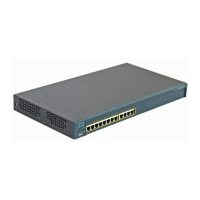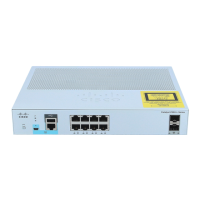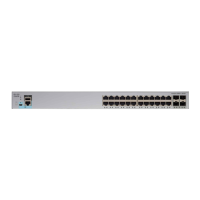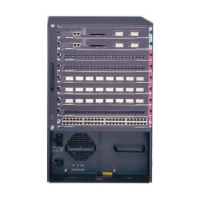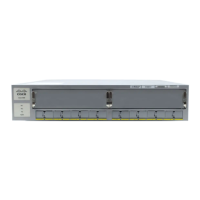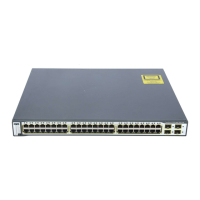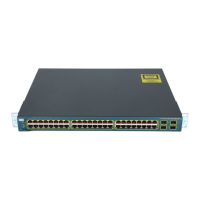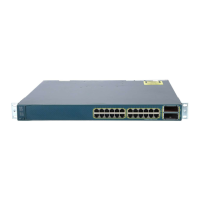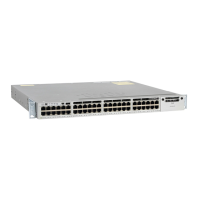Chapter 6 Configuring the System
Configuring STP
6-28
Catalyst 2900 Series XL and Catalyst 3500 Series XL Software Configuration Guide
78-6511-05
Configuring Redundant Links By Using STP UplinkFast
Switches in hierarchical networks can be grouped into backbone switches,
distribution switches, and access switches. Figure 6-6 shows a complex network
where distribution switches and access switches each have at least one redundant
link that STP blocks to prevent loops.
If a switch looses connectivity, the switch begins using the alternate paths as soon
as STP selects a new root port. When STP reconfigures the new root port, other
ports flood the network with multicast packets, one for each address that was
learned on the port. You can limit these bursts of multicast traffic by reducing the
max-update-rate parameter. The default for this parameter is 150 packets per
second. However, if you enter zero, station-learning frames are not generated, so
the STP topology converges more slowly after a loss of connectivity.
STP UplinkFast is a Cisco enhancement that accelerates the choice of a new root
port when a link or switch fails or when STP reconfigures itself. The root port
transitions to the forwarding state immediately without going through the
listening and learning states, as it would with normal STP procedures. UplinkFast
is most useful in edge or access switches and might not be appropriate for
backbone devices.
